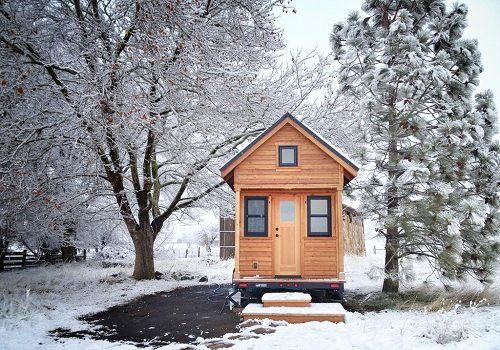
April 3, 2017; Denver Post
For some, a “tiny home” is a lifestyle choice, an alternative to the burden and societal impact of the typical single-family dwelling. According to the website The Tiny Life, “People are joining this movement for many reasons, but the most popular reasons include environmental concerns, financial concerns, and the desire for more time and freedom.” For those concerned about the number of individuals and families living on the streets, tiny homes are an affordable way to provide temporary shelter and transitional housing.
Tiny shelters can be placed on small, unused sites. They can be built quickly and inexpensively, and they provide a base for other services and an overall environment that’s better than SROs, shelters, or tent camp cities.
In Nashville, on the grounds of the Glencliff United Methodist Church, a 20-unit subdivision of 220–400 sq. ft. homes is now in development. The Village at Glencliff was conceived by Open Table Nashville, a nonprofit serving the city’s homeless population, as “a loving, hospitable, compassionate, and rehabilitative community for our friends who are transitioning from the streets to move toward permanent supportive housing.” Glencliff “will provide homes for up to 20 residents who are at highest risk of death if they continue living on the streets.”
Sign up for our free newsletters
Subscribe to NPQ's newsletters to have our top stories delivered directly to your inbox.
By signing up, you agree to our privacy policy and terms of use, and to receive messages from NPQ and our partners.
Elsewhere in Nashville, Infinity Village offers temporary shelter in 60-square-foot buildings that, according to Good Housekeeping, feature “a single door and window…a Murphy bed, mini fridge, and heating and air conditioning.” Just this week, approval was granted for a similar effort in Denver.
The Colorado Village Collaborative—an organization that includes Denver Homeless Out Loud, the Interfaith Alliance, Bayaud Enterprises and other groups—requested the zoning permit to build the project…eleven 8-foot-by-12-foot shelters, as well as communal kitchen, bathroom and shower facilities, on land leased from the Urban Land Conservancy.
As NPQ has previously reported, though this problem affects an estimated half million Americans nightly, this approach is not without its critics. Many just don’t want homeless people as their neighbors. According to The Contributor, Pat Neil, a lifelong resident of the neighborhood near the planned Village at Glencliff, voiced her fears at a community forum. “I’m afraid that these homeless people are going to bring their friends and they’re going to end up in my backyard. I think that there’s plenty of areas in Nashville that it could be built instead of in our backyard.”
From the perspective of those looking for a permanent end to homelessness, these are but transitional efforts that will prove ineffective if the underlying problem of the lack of affordable housing and mental health services is not solved. Ingrid McIntyre, founder and executive director of Open Table Nashville, saw the larger picture in an interview with StyleBlueprint. “We want to disrupt cycles of poverty,” she said. “Find the root cause. Housing ends homelessness.”—Martin Levine











